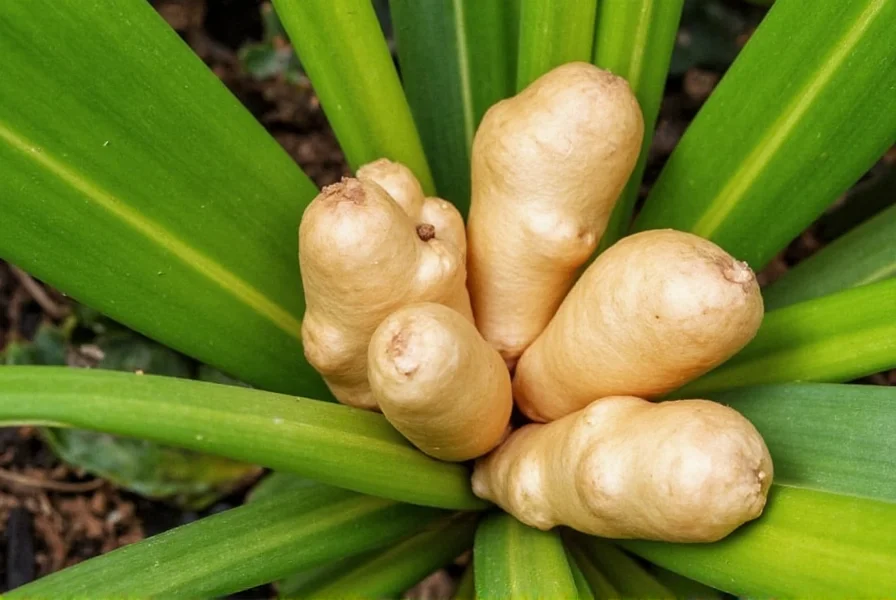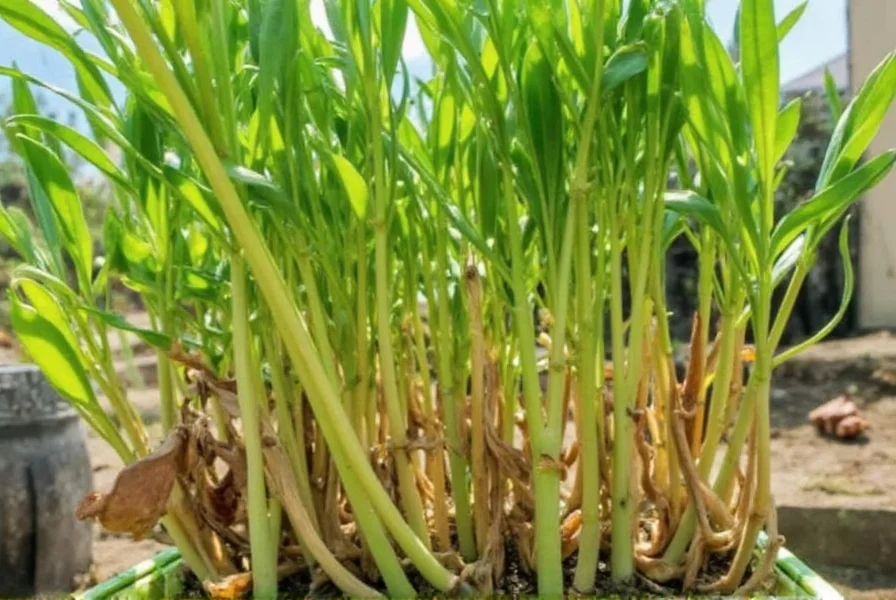Yes, you can successfully grow ginger plants at home by planting fresh ginger rhizomes in well-draining soil with partial shade, maintaining consistent moisture, and waiting 8-10 months for harvest. Start with a plump, fresh ginger root with visible growth buds, plant it shallowly in warm conditions (70-90°F), and provide regular watering without waterlogging the soil.
Understanding Ginger Plant Growth Requirements
Ginger (Zingiber officinale) is a tropical perennial that grows from rhizomes rather than seeds. Unlike many garden plants, ginger thrives in warm, humid conditions with filtered sunlight. Successful ginger cultivation depends on understanding its natural growth cycle and replicating its native Southeast Asian environment as closely as possible in your growing space.
Selecting Quality Ginger Rhizomes
The foundation of successful ginger cultivation begins with selecting the right rhizome. Look for plump, firm ginger roots with smooth skin and visible eye buds (small bumps where new growth emerges). These eye buds appear as small, pointy protrusions on the surface of the rhizome.
While you can use store-bought ginger, organic varieties work best as conventional ginger often contains growth inhibitors. If using grocery store ginger, soak it in water for 24-48 hours to remove potential sprout inhibitors before planting. The best time to plant ginger is at the beginning of the warm season when temperatures consistently stay above 70°F.
| Growing Factor | Optimal Condition | Notes |
|---|---|---|
| Temperature | 70-90°F (21-32°C) | Avoid temperatures below 50°F which cause dormancy |
| Light | Partial shade | 2-5 hours of morning sun ideal; avoid harsh afternoon sun |
| Soil pH | 5.5-6.5 | Slightly acidic conditions preferred |
| Watering | Consistent moisture | Never allow to dry out completely but avoid waterlogging |
| Growth Time | 8-10 months | Full maturity for harvest |
Preparing Your Ginger Planting Environment
Ginger grows well in containers or garden beds, making it versatile for different growing situations. For container growing, select a wide, shallow pot (at least 12 inches deep) with excellent drainage. Ginger rhizomes grow horizontally rather than downward, so width matters more than depth.
The best soil for ginger plants combines rich organic matter with excellent drainage. Create an ideal mix using:
- 60% high-quality potting soil
- 30% compost or well-rotted manure
- 10% perlite or coarse sand
This combination provides the nutrient-rich, moisture-retentive yet well-draining conditions ginger requires. Avoid heavy clay soils that retain too much water, as ginger rhizomes will rot in consistently soggy conditions.

Step-by-Step Ginger Planting Guide
Follow these steps for successful ginger planting:
- Prepare the rhizome: Cut your ginger root into 1-2 inch sections, ensuring each piece has 2-3 eye buds. Allow cut surfaces to dry for 24-48 hours to form a protective callus.
- Fill container: Add your prepared soil mix to your container, leaving 2-3 inches of space below the rim.
- Position rhizomes: Place sections horizontally with eye buds facing upward. Space multiple sections 6-8 inches apart.
- Plant depth: Cover rhizomes with 1-2 inches of soil. Ginger grows best when planted shallowly.
- Initial watering: Water thoroughly until moisture drains from the bottom, then allow the top inch of soil to dry slightly before watering again.
Ginger Plant Care Throughout the Growing Season
Proper care ensures healthy ginger development. During the first few weeks after planting, ginger requires warm temperatures and consistent moisture to establish roots. Once shoots emerge (typically 2-4 weeks), maintain these care practices:
Watering Requirements
Ginger needs consistent moisture but hates waterlogged conditions. Check soil daily during warm weather, watering when the top inch feels dry. Increase watering during hot summer months but reduce frequency if growth slows during cooler periods. Mulching with straw or shredded leaves helps maintain consistent soil moisture.
Fertilizing Schedule
Feed your ginger plants every 4-6 weeks with a balanced, organic fertilizer. A 10-10-10 NPK ratio works well, or use compost tea for a gentler nutrient boost. Avoid high-nitrogen fertilizers which promote leaf growth at the expense of rhizome development.
Light Management
While growing ginger indoors, place near an east-facing window for gentle morning light. Outdoors, choose a location with dappled sunlight or afternoon shade. In extremely hot climates, provide 50-70% shade protection during peak sun hours. Ginger leaves will yellow and burn if exposed to too much direct sunlight.

Troubleshooting Common Ginger Growing Problems
Even with proper care, ginger growers sometimes encounter issues. Here's how to address the most frequent challenges:
Yellowing Leaves
Cause: Overwatering, poor drainage, or excessive sun exposure
Solution: Check soil moisture before watering, improve drainage, and provide more shade if growing outdoors
No New Growth After Planting
Cause: Dormant rhizome, cold temperatures, or growth inhibitors
Solution: Ensure temperatures stay above 70°F, use organic ginger, and be patient—germination can take 3-6 weeks
Rhizome Rot
Cause: Excessive moisture or poorly draining soil
Solution: Reduce watering frequency, improve soil drainage, and ensure containers have adequate drainage holes
Harvesting Your Home-Grown Ginger
Ginger takes 8-10 months to reach full maturity, but you can practice "cut-and-come-again" harvesting after 4-6 months. To determine when ginger is ready for full harvest:
- Leaves begin to yellow and die back naturally
- Stems become less rigid
- Soil around container starts to bulge slightly from expanding rhizomes
For complete harvest, stop watering 1-2 weeks before digging to allow rhizomes to mature fully. Carefully dig around the edges of your container or garden bed, then lift the entire plant. Shake off excess soil and cut stems about 1 inch above the rhizomes.
After harvesting, cure ginger by air-drying for 2-3 days in a shaded, well-ventilated area. This process hardens the skin and improves storage life. Store cured ginger in a cool, dark place or refrigerate for extended freshness.
Storing and Using Your Home-Grown Ginger
Properly stored home-grown ginger maintains freshness significantly longer than store-bought varieties. For short-term storage (2-3 weeks), keep ginger in the refrigerator in a paper bag with ventilation holes. For longer storage, freeze peeled ginger slices in an airtight container.
Home-grown ginger typically has a more delicate flavor than commercial varieties, with less fiber and a more complex taste profile. Use it fresh in teas, stir-fries, or baked goods, or preserve it by pickling or candying.
Frequently Asked Questions
Can I grow ginger from grocery store ginger?
Yes, you can grow ginger from grocery store ginger, but organic varieties work best. Conventional store-bought ginger often contains growth inhibitors that prevent sprouting. If using non-organic ginger, soak it in water for 24-48 hours to remove potential sprout inhibitors. Look for plump roots with visible eye buds (small growth points) for the best chance of success.
How long does it take for ginger to grow from planting to harvest?
Ginger typically takes 8-10 months to reach full maturity for harvest. You'll see initial shoots emerge in 2-4 weeks after planting, but the rhizomes need the full growing season to develop properly. Some gardeners practice "cut-and-come-again" harvesting after 4-6 months, taking small portions while allowing the plant to continue growing.
What are the ideal soil conditions for growing ginger plants?
The best soil for ginger plants is rich in organic matter with excellent drainage. Create an ideal mix using 60% high-quality potting soil, 30% compost or well-rotted manure, and 10% perlite or coarse sand. Ginger prefers slightly acidic soil with a pH between 5.5-6.5. Avoid heavy clay soils that retain too much water, as ginger rhizomes will rot in consistently soggy conditions.
How often should I water ginger plants?
Ginger needs consistent moisture but hates waterlogged conditions. Check soil daily during warm weather, watering when the top inch feels dry. During active growth in warm months, this typically means watering 2-3 times per week. Reduce frequency if growth slows during cooler periods. Mulching with straw or shredded leaves helps maintain consistent soil moisture and prevents the soil from drying out too quickly.
Can you grow ginger indoors year-round?
Yes, you can grow ginger indoors year-round with proper conditions. Place your container near an east-facing window for gentle morning light, or use grow lights for 6-8 hours daily. Maintain temperatures between 70-90°F and humidity around 50-70%. Indoor ginger typically grows more slowly than outdoor plants but can thrive with consistent moisture and appropriate light conditions. Ensure your container has excellent drainage to prevent root rot in indoor environments.










 浙公网安备
33010002000092号
浙公网安备
33010002000092号 浙B2-20120091-4
浙B2-20120091-4